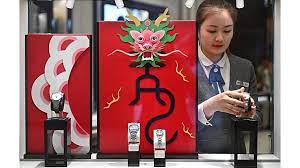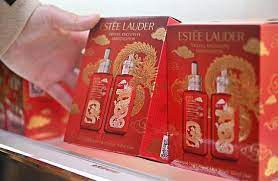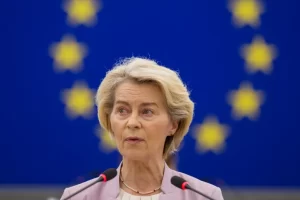Int’l brands embrace Chinese market by tapping into “Year of the Dragon”

Haikou: As the Chinese Lunar New Year, or the Spring Festival, approaches, numerous international brands have tapped into Chinese zodiac culture and unveiled Year of the Dragon limited edition products to embrace the Chinese market.
China will usher in the Year of the Dragon on Feb. 10 according to the Chinese lunar calendar.

Major duty-free shops in south China’s island province of Hainan have been adorned with festive red hues and dragon-themed accessories. International brands are presenting their Spring Festival collections, including cosmetics, clothing, bags, jewelry, and spirits, on a charm offensive aimed at Chinese consumers.
Among the Year of the Dragon limited editions that have taken center stage in duty-free shops are LEGO Group’s Lunar New Year display sets named Auspicious Dragon, Ferragamo’s dragon-print silk foulard, and Swarovski’s necklace with cartoonish dragon pendant, to name just a few.
In a duty-free store in Haikou, the capital of Hainan, a local resident named Tang Dan was browsing skincare products at the Estée Lauder counter. She was immediately drawn to a new Spring Festival limited edition set.
“The red packaging is very festive, and it features a dragon motif, conveying vibes of the Chinese Spring Festival,” said Tang, adding that among the 12 Chinese zodiac signs, the dragon is the most special one, “symbolizing not only the Chinese nation but also good fortune.”
Tang believes that the incorporation of Chinese zodiac culture in product design by international brands has been implemented to cater to the preferences and demand of Chinese consumers.
“As the Spring Festival approaches, everyone wants to buy something new, and these limited editions specifically designed for the Chinese people are undoubtedly more appealing,” she noted.
At the Emporio Armani counter, a range of new clothing items tailor-made for the Year of the Dragon took center stage, including hoodies, polo shirts, sweaters, and jackets.
Presenting a new hoodie, saleswoman Pan Funa said the piece is typically Chinese red, embellished with dragon zodiac elements and Chinese embroidery, making it a perfect fit for the Chinese New Year.
She said the Year of the Dragon collections arrived in mid-January and have since sold very well. In recent years, Emporio Armani has consistently launched zodiac-themed items for the Chinese New Year, but this year’s collections have been the biggest hit.
“As we Chinese are called ‘descendants of the dragon,’ the dragon is a relatively special zodiac sign, and also a good sign that signifies auspiciousness,” Pan said while explaining why this year’s collections have sold particularly well.
In recent years, international brands frequently embraced traditional Chinese cultural elements to tap into the immense potential of the massive Chinese market.
Take the luxury market for example, China’s luxury market saw a 12 percent year-on-year increase in 2023, recovering from the previous year’s decline due to the pandemic, according to Bain & Company’s latest China Luxury Report.
In 2023, Chinese luxury consumption is estimated to have accounted for approximately 22 to 24 percent of the world’s total, with consumption on the Chinese mainland comprising about 16 percent, the report read.
According to the report, by 2030, Chinese luxury consumption is expected to reach 35 to 40 percent of the world’s total, with consumption on the Chinese mainland reaching 24 to 26 percent, solidifying its position as one of the leading luxury markets globally.
The duty-free market plays a crucial role in the global luxury consumption market. Hainan, a tropical resort island in China, is gradually becoming a vital luxury consumption center.
Official data showed Hainan’s duty-free sales reached 43.76 billion yuan (about 6.16 billion U.S. dollars) in 2023, marking a 25.4 percent increase year on year. The number of shoppers during this period hit 6.76 million, surging by 59.9 percent year on year.
In 2023, Hainan welcomed more than 90 million domestic and international tourists, and raked in over 181 billion yuan in tourism revenue, up by 49.9 percent and 71.9 percent year on year respectively.





